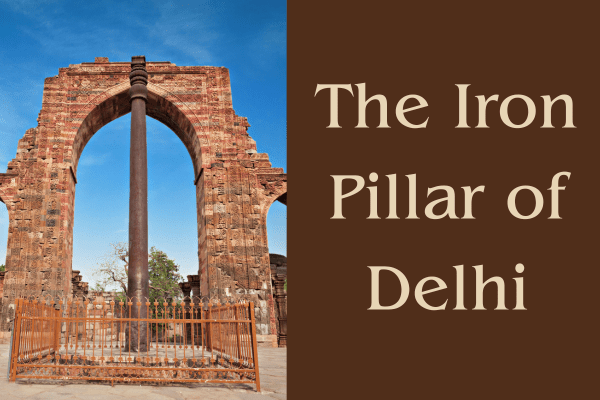What’s in a pillar, you might ask? Just a tall, solid shaft of metal or stone? Well, not quite — at least not when it comes to the Iron Pillar of Delhi, standing tall at 7.20 meters in the Qutb complex of Mehrauli. What appears to be a simple monument at first glance is, in truth, a scientific mystery, a cultural marvel, and a historical enigma that has fascinated researchers and tourists alike for centuries.

🔍 A Pillar That Defies Time
Cast from iron of exceptional purity, the Iron Pillar has withstood the test of time for over 1500 years — and remarkably, it has done so without rusting. Yes, in the heart of Delhi’s ever-changing seasons, from scorching heat to monsoon rains, this ancient structure has remained almost untouched by corrosion.
Modern metallurgy has yet to fully explain the ancient technology used in its creation. Despite multiple scientific studies, including those by IIT Kanpur and the National Metallurgical Laboratory, the exact technique that makes the pillar corrosion-resistant remains largely a mystery. It’s a symbol of the advanced scientific knowledge possessed by India’s ancient metalworkers — a knowledge that has somehow been lost in time.
 A Royal Legacy Etched in Iron
A Royal Legacy Etched in Iron
The origins of the pillar are just as captivating as its physical properties. According to an inscription in ancient Sanskrit (written in Gupta Brahmi script), the pillar was originally erected as a Vishnudhwaja — a sacred flagstaff dedicated to Lord Vishnu — in memory of King Chandra, who is widely believed to be Chandragupta II (Vikramaditya) of the Gupta dynasty.
The square capital at the top of the pillar has a hole, leading historians to believe that it may once have held an image of Garuda, the eagle mount of Vishnu, crowning the pillar as a religious symbol as well as a royal tribute.
 A Touch of Folklore and Faith
A Touch of Folklore and Faith
Besides its metallurgical and historical intrigue, the Iron Pillar is also the center of a charming local legend. It is said that if you stand with your back to the pillar and encircle it with your arms, making a secret wish, that wish will come true. While touching the pillar is now restricted to preserve its surface, this age-old belief adds a delightful layer of cultural charm to the monument.
 More Than Just Iron
More Than Just Iron
The Iron Pillar is not just a symbol of scientific marvel or religious devotion — it is a silent storyteller of India’s ancient legacy. It stands not merely as a relic of the past, but as a living example of how India’s history is filled with engineering genius, spiritual symbolism, and artistic vision — all forged into one structure.
So, the next time you find yourself in Delhi’s historic Qutb complex, take a moment to appreciate this silent giant. A pillar, yes — but a pillar of wonder, wisdom, and heritage.
 Have You Visited the Iron Pillar?
Have You Visited the Iron Pillar?
Share your experiences in the comments — or tell us which other historical marvels you’d like us to explore in the next feature!

 A Royal Legacy Etched in Iron
A Royal Legacy Etched in Iron A Touch of Folklore and Faith
A Touch of Folklore and Faith More Than Just Iron
More Than Just Iron Have You Visited the Iron Pillar?
Have You Visited the Iron Pillar?